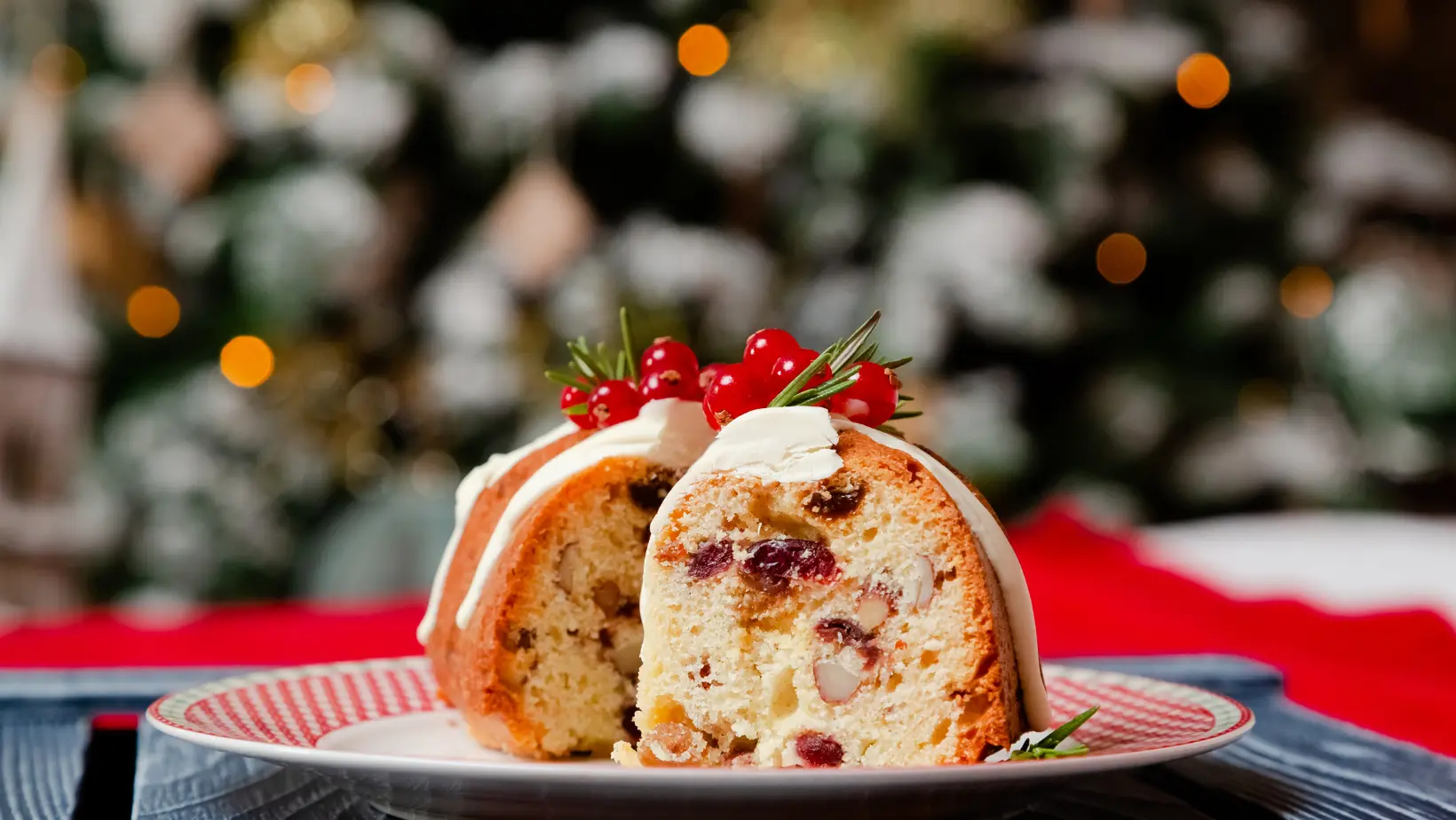The Christmas cake is more than a dessert; it is a symbol of joy, tradition, and togetherness during the festive season. But what is the traditional cake eaten at Christmas? From its historical origins to modern adaptations, this beloved treat has become a centerpiece of celebrations worldwide.
The History of the Christmas Cake
The story of the Christmas cake began in medieval England when people prepared a dish called frumenty. This porridge, made with wheat, milk, and spices, gradually evolved into plum pudding. Eventually, during the Victorian era, it transformed into the rich and flavorful cake we know today. At that time, sugar, dried fruits, and exotic spices became widely available, making the cake a symbol of abundance.
In addition, Stir-up Sunday became a cherished tradition. On this day, families would gather to mix the batter, stirring it from east to west to honor the journey of the Wise Men. This shared activity not only created delicious cakes but also strengthened family bonds. For festive inspiration, explore recipes like the Christmas Tree Cake to make your holidays even sweeter.
Why Is the Christmas Cake Special?
The Christmas cake is not just about its rich taste—it carries deep symbolic meanings. Traditionally, bakers include 13 ingredients, representing Jesus and his 12 apostles. Furthermore, many families hide coins or charms in the batter, believing that whoever finds one will enjoy good fortune in the coming year.
If you enjoy symbolic treats, check out What Are Christmas Tree Cakes Made Of? to discover how creative desserts combine meaning and flavor.
How Do Cultures Celebrate with Christmas Cakes?
Although the Christmas cake is deeply rooted in British traditions, variations of this festive treat exist across the globe. For instance:
- United Kingdom: A dense fruit cake topped with marzipan and royal icing.
- Italy: Panettone, a light and fluffy bread loaf filled with candied fruits.
- France: Bûche de Noël, a chocolate Yule log cake decorated to resemble a log.
- Germany: Stollen, a fruit bread coated in powdered sugar.
- Japan: A sponge cake topped with whipped cream and strawberries.
Each country’s version reflects its unique culture and holiday customs. To try something fruity and festive, explore the Peach Cobbler Cake Mix Recipe for a delightful twist on tradition.
For further reading on global Christmas desserts, visit Smithsonian’s History of Christmas Food Traditions.
Modern Twists on the Christmas Cake
As culinary preferences evolve, bakers have introduced innovative versions of the Christmas cake. Here are a few popular trends:
- Dietary-Friendly Options: Vegan and gluten-free recipes ensure everyone can enjoy the holiday treat. Learn how to create these alternatives at How to Make Gluten-Free Cake Not Dry.
- Decorative Styles: Rustic cakes with fresh fruits and nuts are gaining popularity for their natural and minimalist appeal.
- Flavor Experiments: Bakers are adding new ingredients, such as bold spices, chocolate, or liqueurs, to elevate the flavor.
For more creative holiday baking ideas, check out Delish’s Holiday Cake Ideas.
Frequently Asked Questions About Christmas Cakes
What is a Christmas cake?
A Christmas cake is a rich, fruit-based dessert infused with spices and often aged with alcohol to deepen its flavor.
Why are dried fruits and nuts commonly used?
These ingredients symbolize luxury and warmth, perfectly reflecting the festive spirit.
When should a Christmas cake be prepared?
Traditionally, it is made on Stir-up Sunday to allow the flavors to mature by Christmas.
Are there modern alternatives to traditional recipes?
Yes, options like Creamy Cheesecake with Sour Cream Topping offer a contemporary twist on holiday classics.
Conclusion
The Christmas cake continues to symbolize the joy and warmth of the holiday season. Whether you enjoy the classic fruitcake, a light sponge cake, or an inventive modern version, this dessert remains a centerpiece of festive celebrations.
Discover more holiday recipes on HotyRecipes or explore how other cultures celebrate with desserts at Taste Atlas. Celebrate this season with a dessert that combines tradition, flavor, and love.

